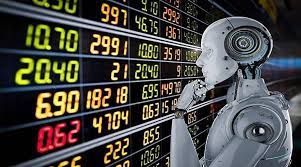In the fast-paced world of financial markets, technology has continually pushed the boundaries of what’s possible. One such innovation that has made significant waves in recent years is the emergence of Forex robots. These automated trading systems, powered by complex algorithms and artificial intelligence, have transformed the landscape of forex robot, promising efficiency, accuracy, and potentially lucrative returns for investors. In this article, we delve into the workings of Forex robots, their benefits, challenges, and the future they might shape in the realm of forex trading.
What are Forex Robots?
Forex robots, also known as Expert Advisors (EAs), are software programs designed to automate trading decisions in the foreign exchange (forex) market. These robots operate based on predefined criteria and algorithms, executing trades on behalf of traders without the need for human intervention. By utilizing sophisticated mathematical models and historical data analysis, Forex robots aim to identify trading opportunities and capitalize on them swiftly.
How Do Forex Robots Work?
Forex robots operate on a set of rules programmed by their developers. These rules typically include parameters such as entry and exit points, risk management strategies, and position sizing. The algorithms used by these robots analyze vast amounts of market data, including price movements, volume, and technical indicators, to identify patterns and trends that human traders may overlook or are unable to process quickly enough.
Once a trading opportunity aligns with the predefined criteria, the Forex robot executes the trade automatically. This automated approach eliminates emotional biases and human errors often associated with manual trading, allowing for disciplined and consistent execution of trading strategies.
Benefits of Forex Robots
- 24/7 Trading: Forex robots can monitor the markets and execute trades around the clock, taking advantage of opportunities that arise even when traders are asleep or occupied with other tasks.
- Speed and Efficiency: Automation enables instant order execution, eliminating the delays that may occur with manual trading. Forex robots can enter and exit trades within milliseconds, capitalizing on fleeting market conditions.
- Emotion-Free Trading: Emotional decision-making is a common pitfall for many traders. Forex robots operate based on logic and predefined rules, removing the influence of fear, greed, or indecision from the trading process.
- Backtesting and Optimization: Developers can backtest their Forex robots using historical data to assess performance and fine-tune strategies for optimal results. This iterative process allows for continuous improvement and adaptation to changing market conditions.
- Diversification: Forex robots can trade across multiple currency pairs simultaneously, spreading risk and potentially enhancing returns through diversification.
Challenges and Considerations
Despite their potential advantages, Forex robots also pose certain challenges and considerations:
- Over-Optimization: Excessive optimization of trading strategies based on historical data may lead to overfitting, where the robot performs well in past market conditions but fails to adapt effectively to new ones.
- Market Volatility: Sudden and extreme market movements can pose challenges for Forex robots, as they may struggle to react quickly or adequately adjust their strategies to volatile conditions.
- Technical Failures: Like any software, Forex robots are susceptible to technical glitches, connectivity issues, or data inaccuracies, which could potentially lead to missed opportunities or erroneous trades.
- Lack of Human Judgment: While automation eliminates emotional biases, it also means that Forex robots lack the intuition, experience, and adaptability of human traders when it comes to interpreting nuanced market dynamics.
The Future of Forex Robots
As technology continues to advance, the capabilities and adoption of Forex robots are likely to expand further. Advancements in artificial intelligence, machine learning, and big data analytics may enable these automated systems to become even more sophisticated, adaptive, and resilient to changing market conditions.
Moreover, the democratization of algorithmic trading through accessible platforms and tools may empower individual traders and investors to develop and deploy their own Forex robots, democratizing access to potentially lucrative trading strategies.
However, it’s essential to recognize that while Forex robots can enhance efficiency and convenience, they are not a one-size-fits-all solution. Successful trading still requires a deep understanding of market dynamics, risk management principles, and strategic decision-making.
In conclusion, Forex robots represent a significant technological innovation in the world of currency trading, offering benefits such as automation, speed, and emotion-free execution. While they hold promise for both individual traders and institutional investors, careful consideration of their limitations and challenges is necessary to harness their full potential responsibly. As technology evolves and market dynamics continue to shift, Forex robots are poised to play an increasingly influential role in shaping the future of forex trading.



